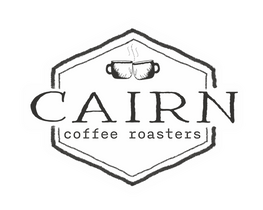Coffee, Mold, and Marketing Claims—What You Should Know
Oct 05, 2025
Mold in Coffee: What’s Real, What’s Marketing
The other day, I saw an ad that really got under my skin. On the left was a branded bag of roasted coffee labeled “mold-free.” On the right, a generic competitor’s bag labeled “full of mold.” No context, no nuance—just fear-based marketing. It motivated me to speak up and help clarify these mold claims for our customers.
Let me be clear: I’m not downplaying concerns about mold or mycotoxins. They can cause allergies and illness, and none of us want to consume moldy food. My intent is to reassure you that the coffee we source—and that most specialty roasters use—is already clean and safe thanks to careful harvesting, processing, and storage. It doesn’t require a new, costly verification process to be mold-free.
As a roaster, I take pride in sourcing well-processed coffees and roasting them with care. I also believe customers deserve transparency, not scare tactics. So let’s talk about mold in coffee—what’s real, what’s regulated, and what’s just marketing noise:
-
Green coffee is susceptible to mold and mycotoxins, especially ochratoxin A and aflatoxins. Specialty coffee producers and importers implement testing and processing standards to minimize contamination.
Reference: FDA – Mycotoxins in Food -
Green coffee is stored at low moisture levels—typically below 12%, well under the ~15% threshold needed for mold growth. Importers use climate-controlled facilities, and we do as well. In our shop, we regularly monitor moisture levels using a handheld meter to track changes over time. Our readings consistently show that moisture levels decrease during storage—not increase—further reducing the risk of mold development.
Reference: National Institute of Environmental Health Sciences – Mold and Mycotoxins -
One test result from one bag isn’t science.
Green coffee is typically packaged in 60–70 kg bags using moisture-regulating liners, and roasters purchase multiple bags for inventory. Some “mold-free” brands cite lab results from a single sample to claim superiority. But mold testing is complex—meaningful results require broad sampling, validated methods, and context. Without that, it’s not science—it’s marketing. -
Taste is the final gatekeeper.
Moldy coffee would never pass the sensory standards required for high-grade lots. If it’s moldy, you’ll taste it—and it won’t make it past the cupping table. That’s why specialty importers reject defective lots long before they reach your cup.
Here’s a comparison: If I were a home builder and marketed my houses as “lead-paint free” by showing one of my homes next to a competitor’s labeled “full of lead,” I’d be using fear to claim superiority. And if I published a certificate showing one paint sample from one room in one house, that wouldn’t be scientific. Besides, lead-based paint was banned in 1978.
We don’t market our coffee as “mold-free” because it’s not a regulated or meaningful claim. Instead, we focus on sourcing clean, well-processed coffees from trusted partners—and roasting them with care. We hope you purchase our coffee because you enjoy it and support the conservation orientation of our company.
If you ever want to talk about how coffee is processed, stored, or tested, we’re happy to share. Transparency is part of our craft.
